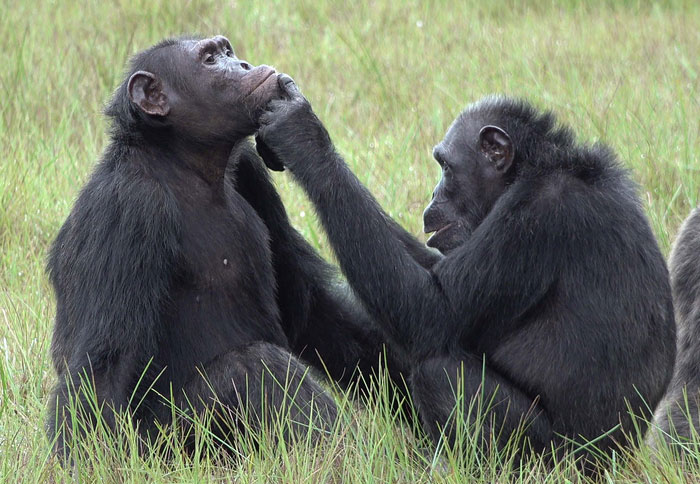
This Article From Issue
May-June 2022
Volume 110, Number 3
Page 142
In this roundup, managing editor Stacey Lutkoski summarizes notable recent developments in scientific research, selected from reports compiled in the free electronic newsletter Sigma Xi SmartBrief.
Broader Genomic Perspective
A new tool allows researchers to gain a more expansive understanding of the human genome, which could aid in the development of targeted disease treatments. A team at the University of California, Santa Cruz, Genomics Institute developed a bioinformatic method called Giraffe that focuses on the pangenome, which includes information about people with diverse genome sequences. Genomic studies often rely on a single reference genome from an individual as the basis for comparison to wider populations, but that approach fails to capture the diversity of the human population. For example, many of these reference genomes derive from the Human Genome Project, which overwhelmingly represents people of European descent; by contrast, some 97 percent of the African genome has not been studied. (See “Genetic Blind Spots,” July–August 2021.) When the genome of a person of African descent does not match the reference genome, it is labeled a variant, rather than an aspect of normal population diversity. By using the pangenome, Giraffe provides information about genetic variation across populations. This information could help researchers develop treatments for diseases that affect specific ethnic groups.
Sirén, J., et al. Pangenomics enables genotyping of known structural variants in 5202 diverse genomes. Science doi:10.1126/science .abg8871 (December 17, 2021).
Baby Asteroids
The discovery of a pair of near-Earth objects that may have formed less than 300 years ago provides evidence that the Solar System is still a work in progress. The objects are an asteroid pair—meaning they broke off from the same celestial body and have similar orbits around the Sun. They were both found in August 2019, but by different teams: A group at the Pan-STARRS survey in Hawaiʻi identified 2019 PR2, and a team at the Catalina Sky Survey in Arizona found 2019 QR6. Further observations show that the asteroids have similar surface features, bolstering the theory that they came from the same parent object. After the asteroids were discovered, researchers reviewed celestial data going back to 2005 for evidence of their origins and orbits. Most asteroid pairs form from a larger asteroid that broke apart, but gravitational models with that assumed origin could not explain this pair’s odd elliptical orbit. Further modeling of the orbit suggests that the asteroids may have broken off from a comet a mere 300 years ago, but if that were the case, there would be visible ice and frozen gas emanating from the asteroid pair. The origins of 2019 PR2 and 2019 QR6 remain a mystery, but their relative proximity to Earth provides astronomers with an unprecedented opportunity to study new and relatively close objects in the Solar System.

UC Berkeley/SETI Institute
Fatka, P., et al. Recent formation and likely cometary activity of near-Earth asteroid pair 2019 PR2–2019 QR6. Monthly Notices of the Royal Astronomical Society 510:6033–6049 (February 2).
Textural Speech
Across hundreds of languages, the word for rough includes a trilled r sound, demonstrating a common connection between how a word feels when spoken and its meaning. Iconicity—the correlation between the form of a word and its semantics—is found in all human languages, but the sense of touch has received little attention in that regard. A team of linguists led by Bodo Winter of the University of Birmingham examined how words that convey texture are expressed in 331 spoken languages across 84 language families, including both modern languages and Proto-Indo-European languages dating back 6,000 years. They found a remarkable stability in the iconicity of words that convey texture. In ancient languages that use a trilled r, the sound is used to denote roughness 44 percent of the time, whereas the same sound is used in only 8 percent of words meaning smooth. That correlation is even stronger in modern languages that use a trilled r; it features in 63 percent of words denoting roughness compared to 35 percent of words for smoothness. The stability of the trilled r’s association with roughness over time and place indicates that touch iconicity is a deeply rooted aspect of languages that warrants further study.
Winter, B., M. Sóskuthy, M. Perlman, and M. Dingemanse. Trilled /r/ is associated with roughness, linking sound and touch across spoken languages. Scientific Reports 12:1035 (January 20).
Ape First Aid
Chimpanzees use insects to treat open wounds on themselves and others. This activity has not been observed before in any animal species. Over a period of 15 months, researchers documented 22 different chimpanzees using insects to treat wounds, and they all did so in the same manner. An ape would catch an insect and immobilize it by placing it between their lips. They would then use either their fingers or their lips to rub the insect on the wound. Finally, they would again use either their fingers or their lips to remove the insect. Despite having observed this behavior being used to treat 76 open wounds, the researchers have not been able to identify the small, flying insect that the chimpanzees are using. Self-medication among animals is not uncommon, but it usually takes the form of ingesting purgative plants. Nonhuman primates have been observed rubbing leaves or arthropods on wounds, but not insects. The chimpanzees’ repeated behavior indicates that they are using the insects either to treat or to soothe open wounds, and that they might know something about the healing properties of this insect that humans have yet to discover. The altruistic treatment of other chimpanzees’ wounds bolsters the theory that nonhuman species exhibit prosocial behaviors.

Tobias Deschner/Ozouga chimpanzee project
Mascaro, A., L. M. Southern, T. Deschner, and S. Pika. Application of insects to wounds of self and others by chimpanzees in the wild. Current Biology 32:R97–R115 (February 7).

American Scientist Comments and Discussion
To discuss our articles or comment on them, please share them and tag American Scientist on social media platforms. Here are links to our profiles on Twitter, Facebook, and LinkedIn.
If we re-share your post, we will moderate comments/discussion following our comments policy.